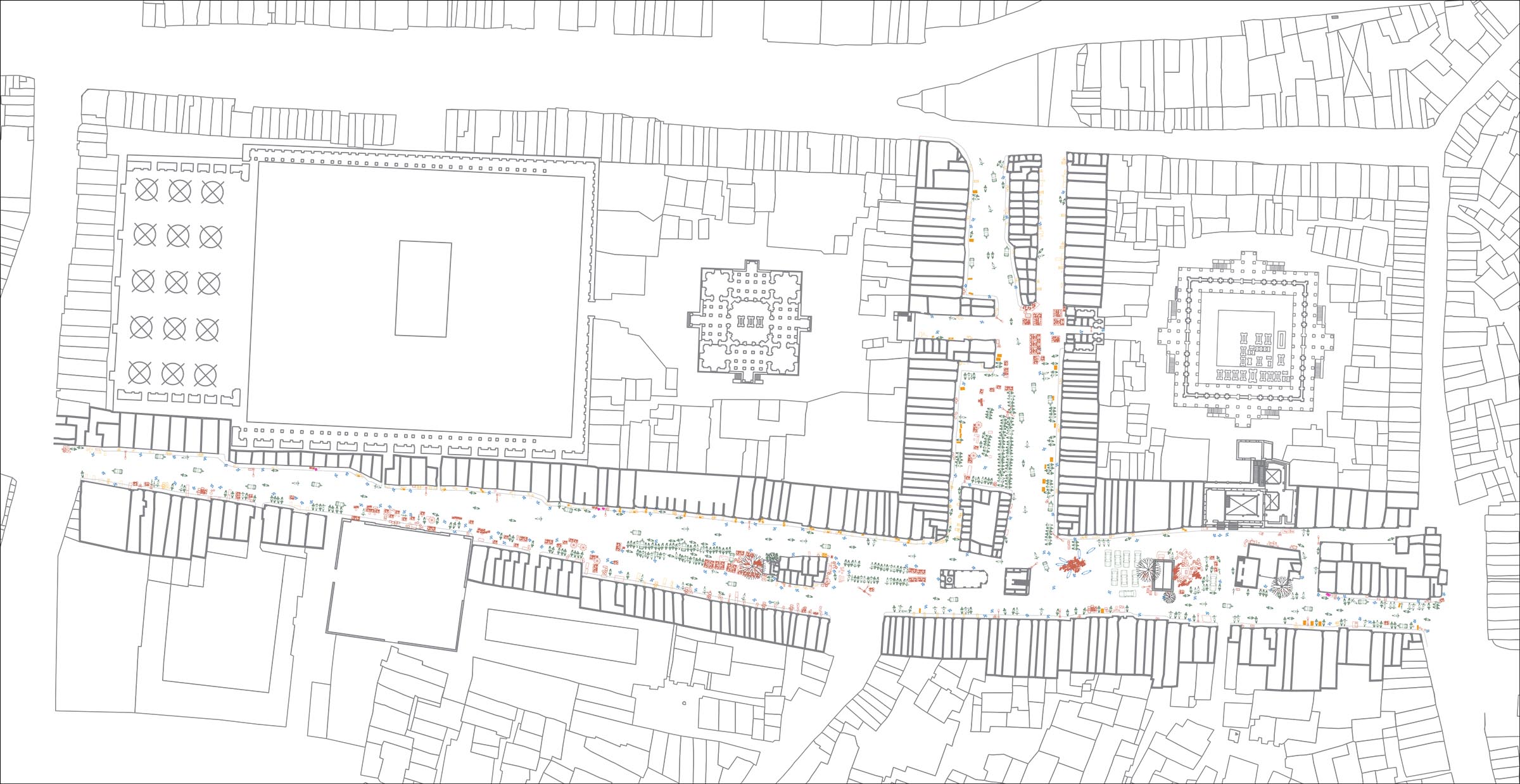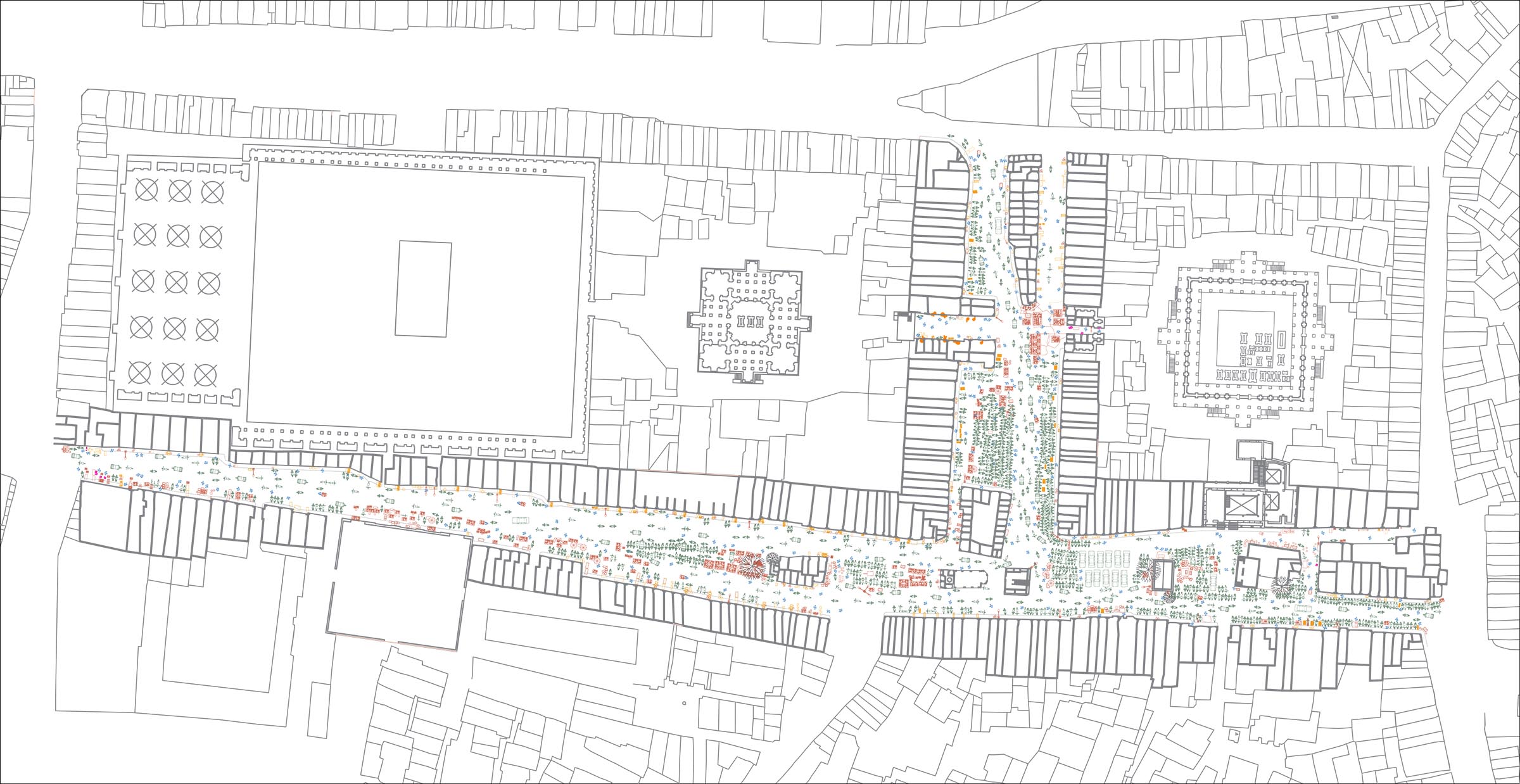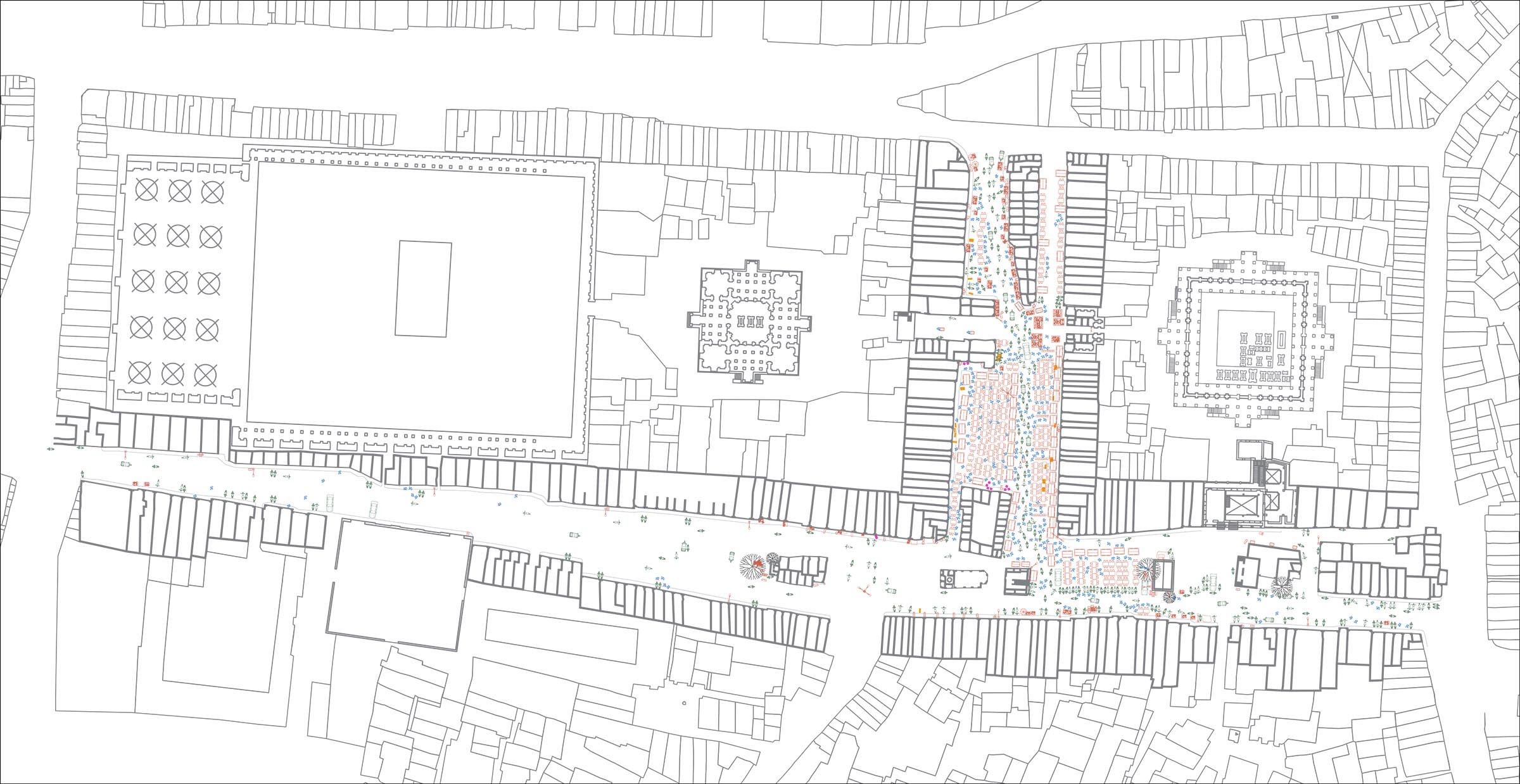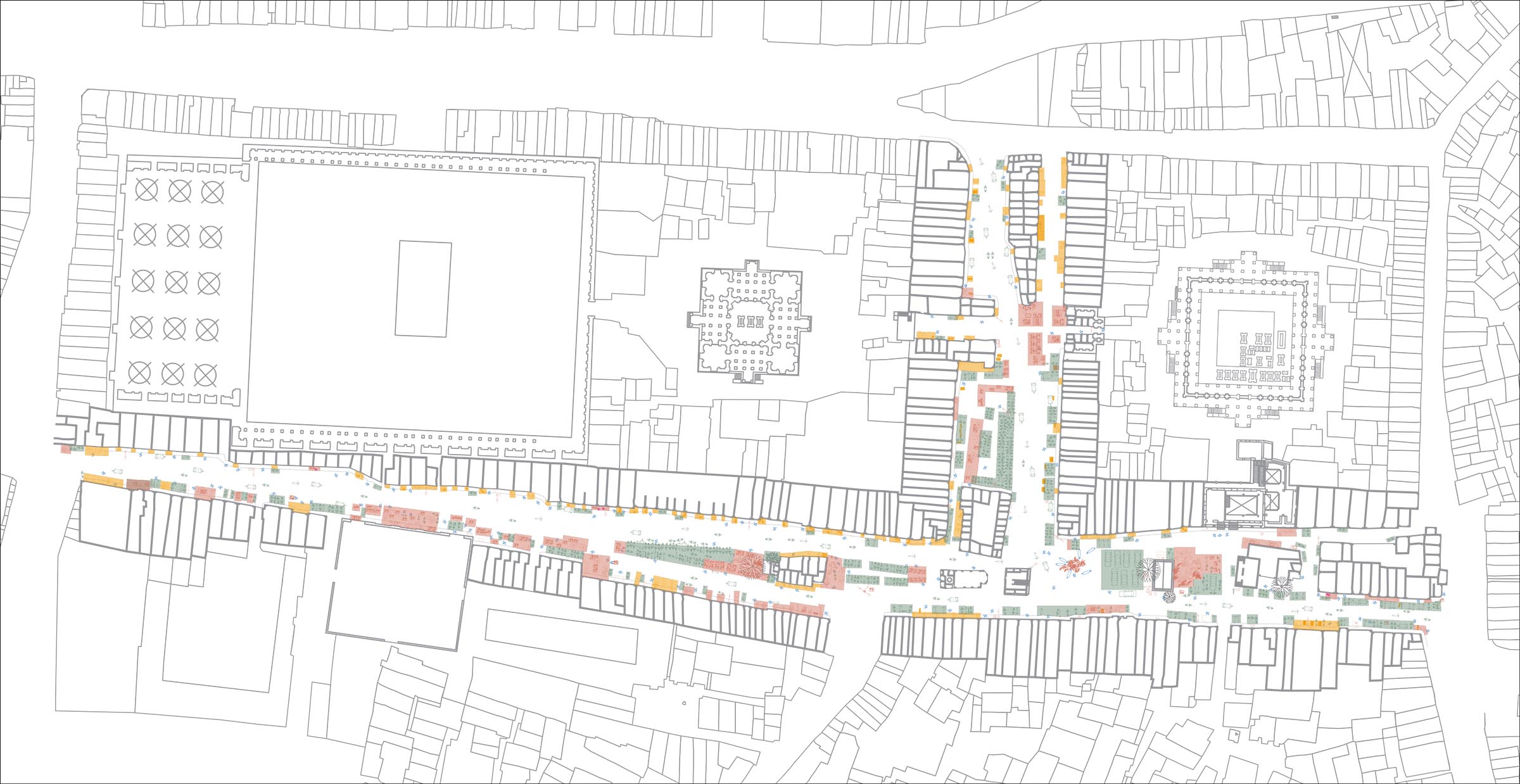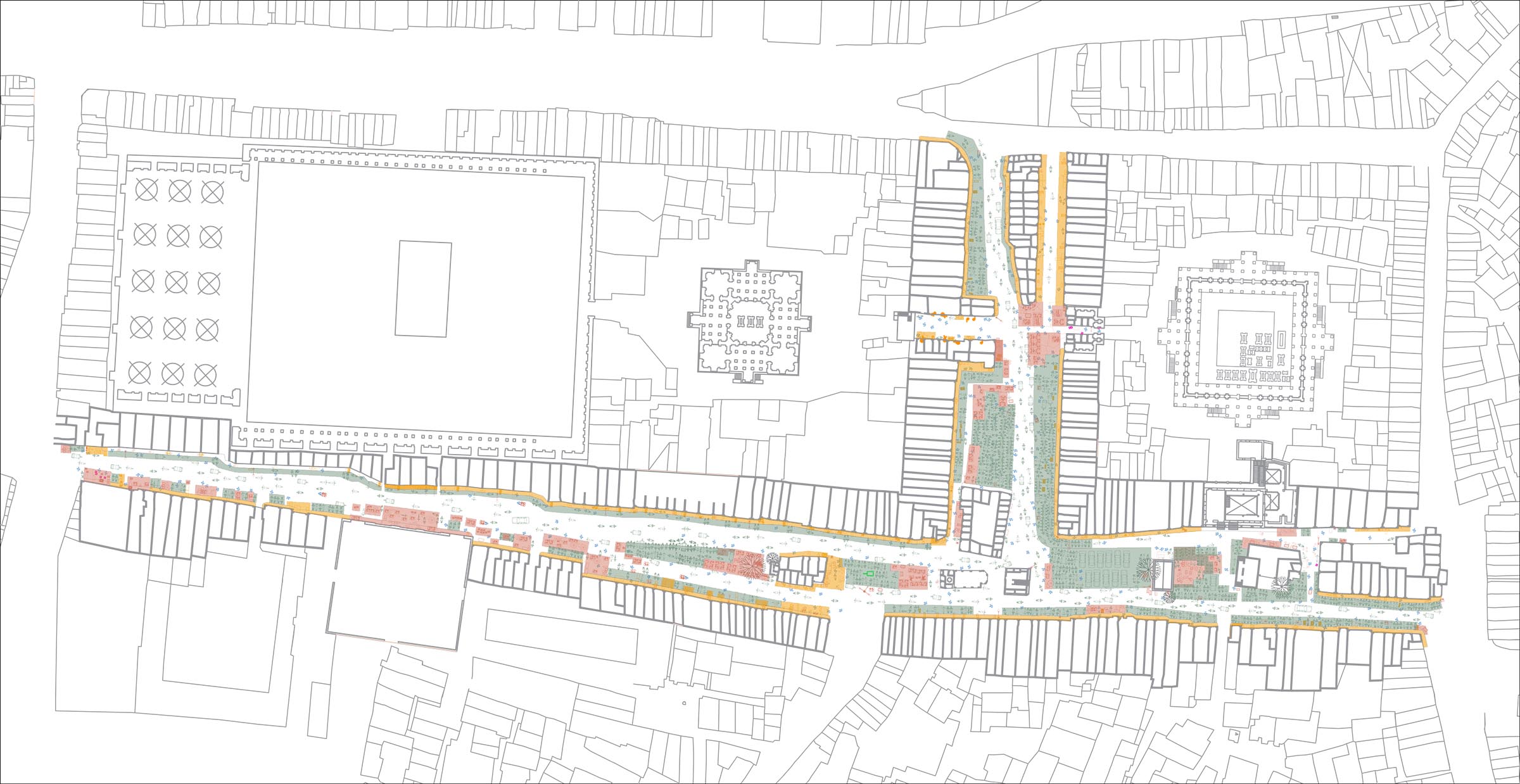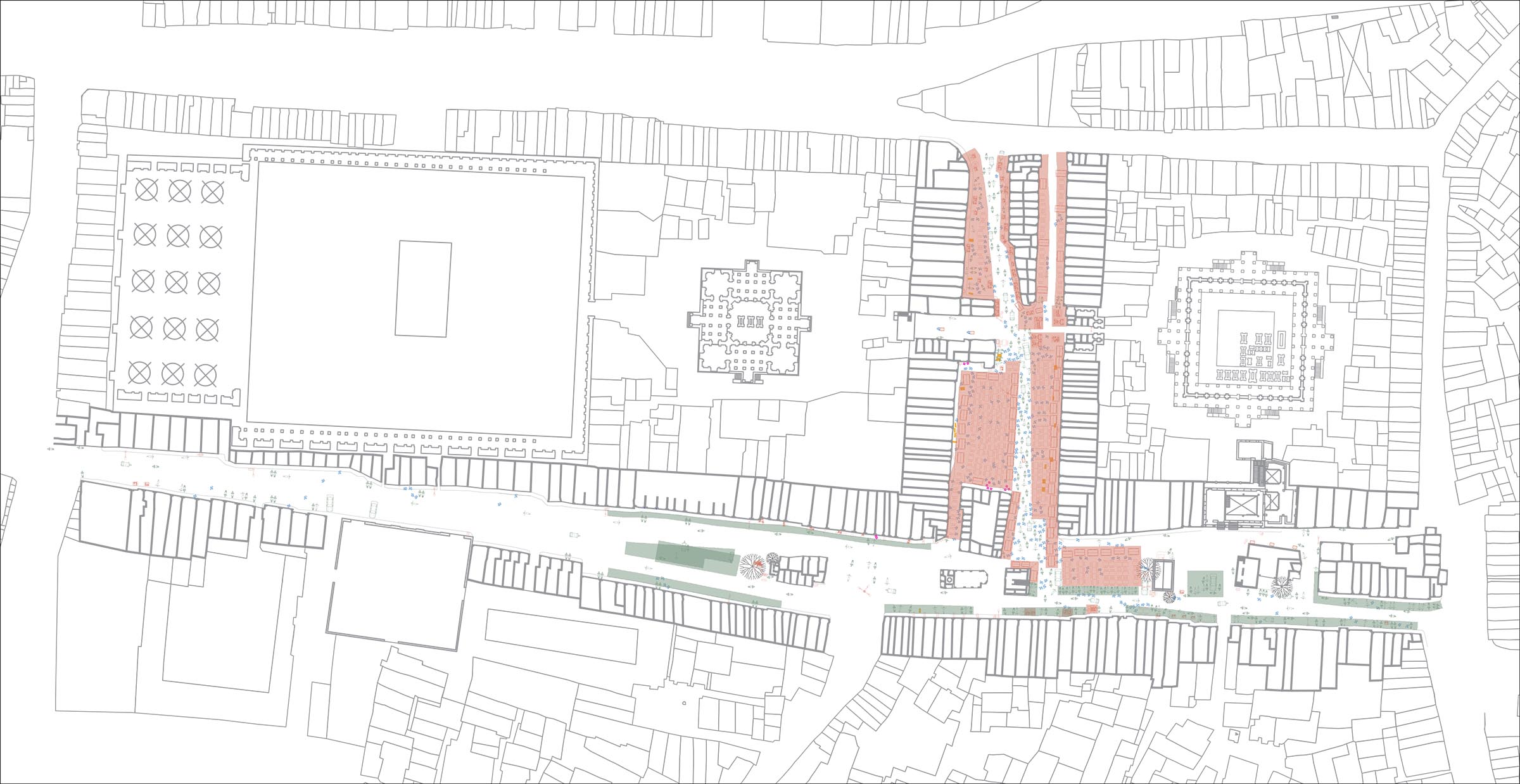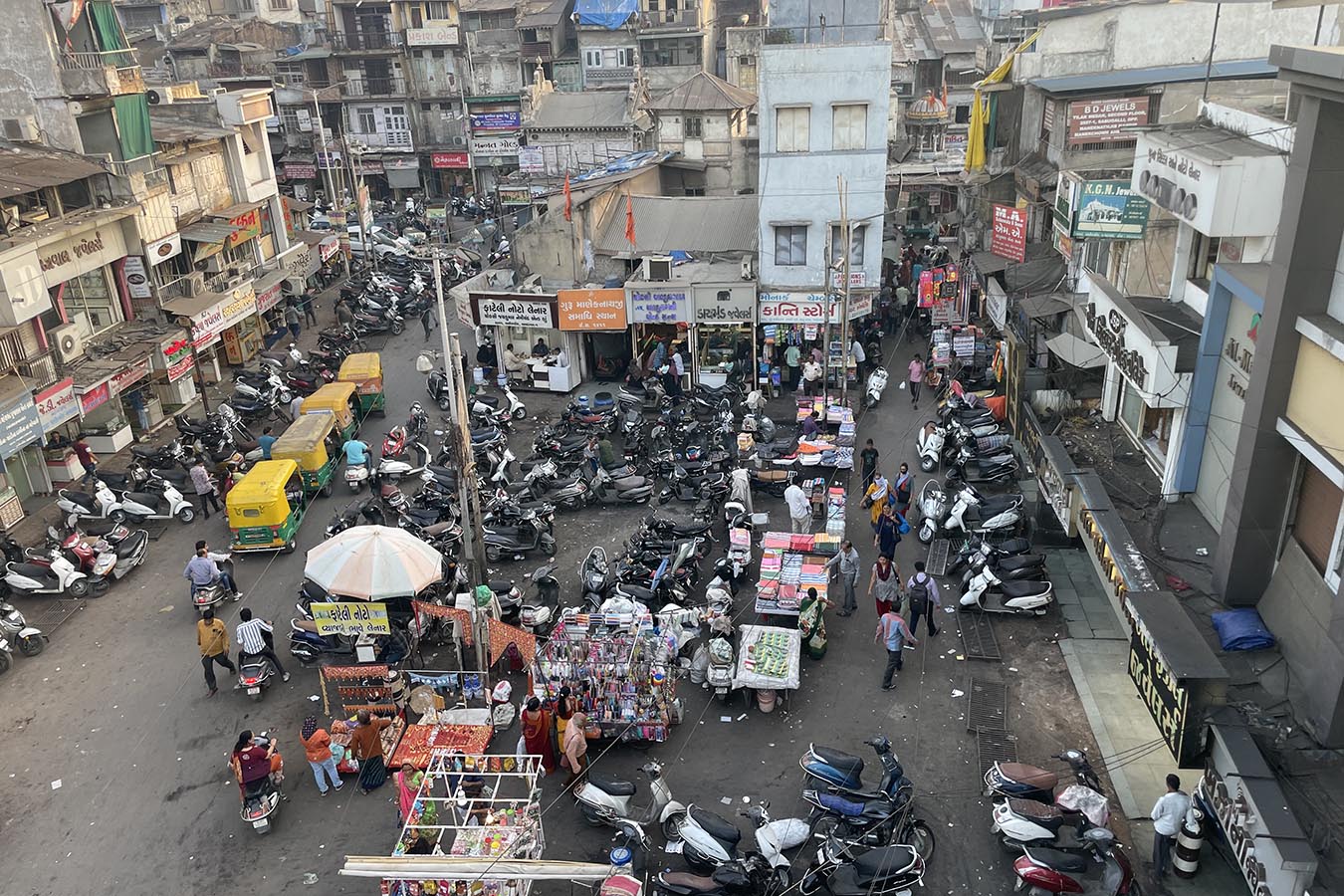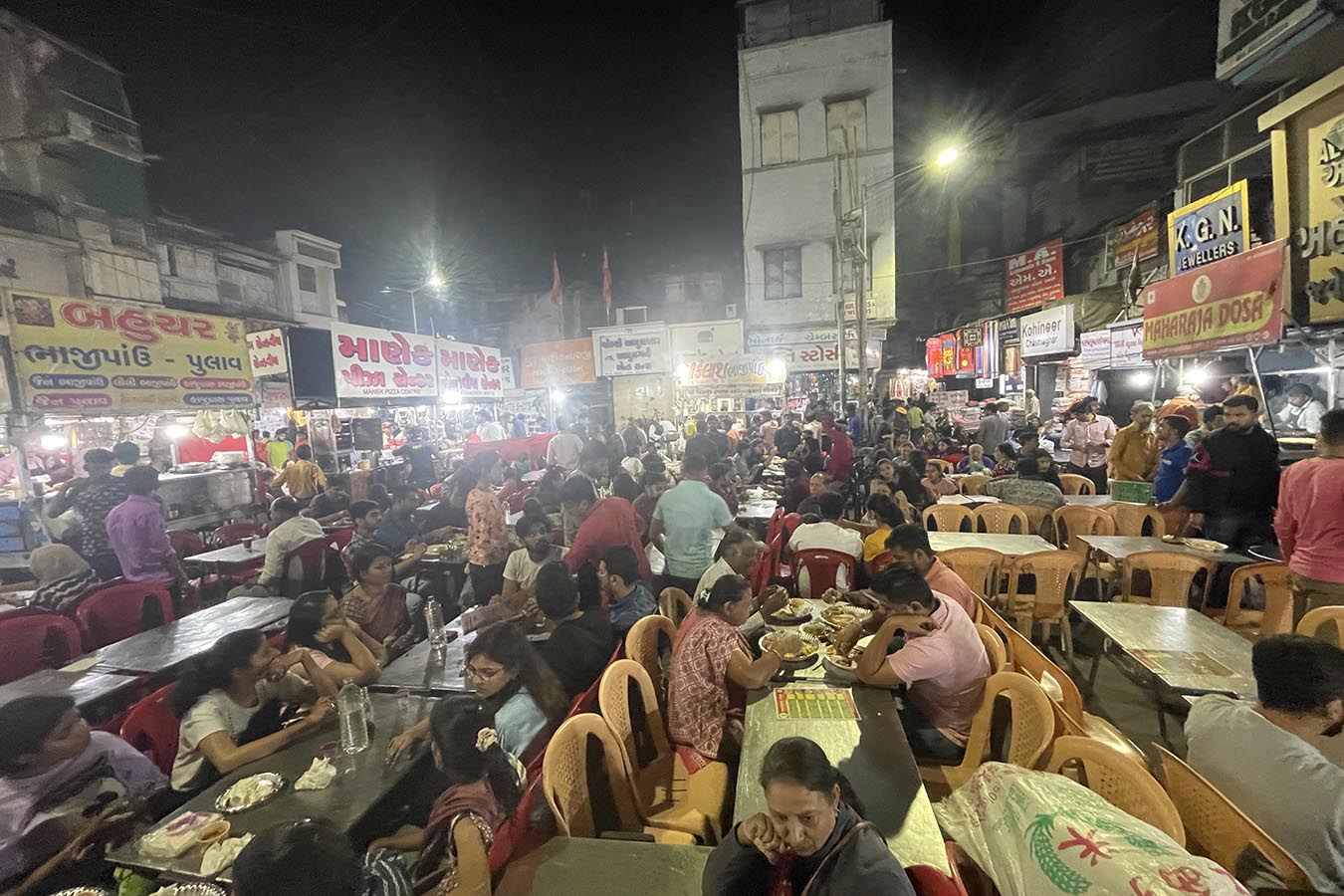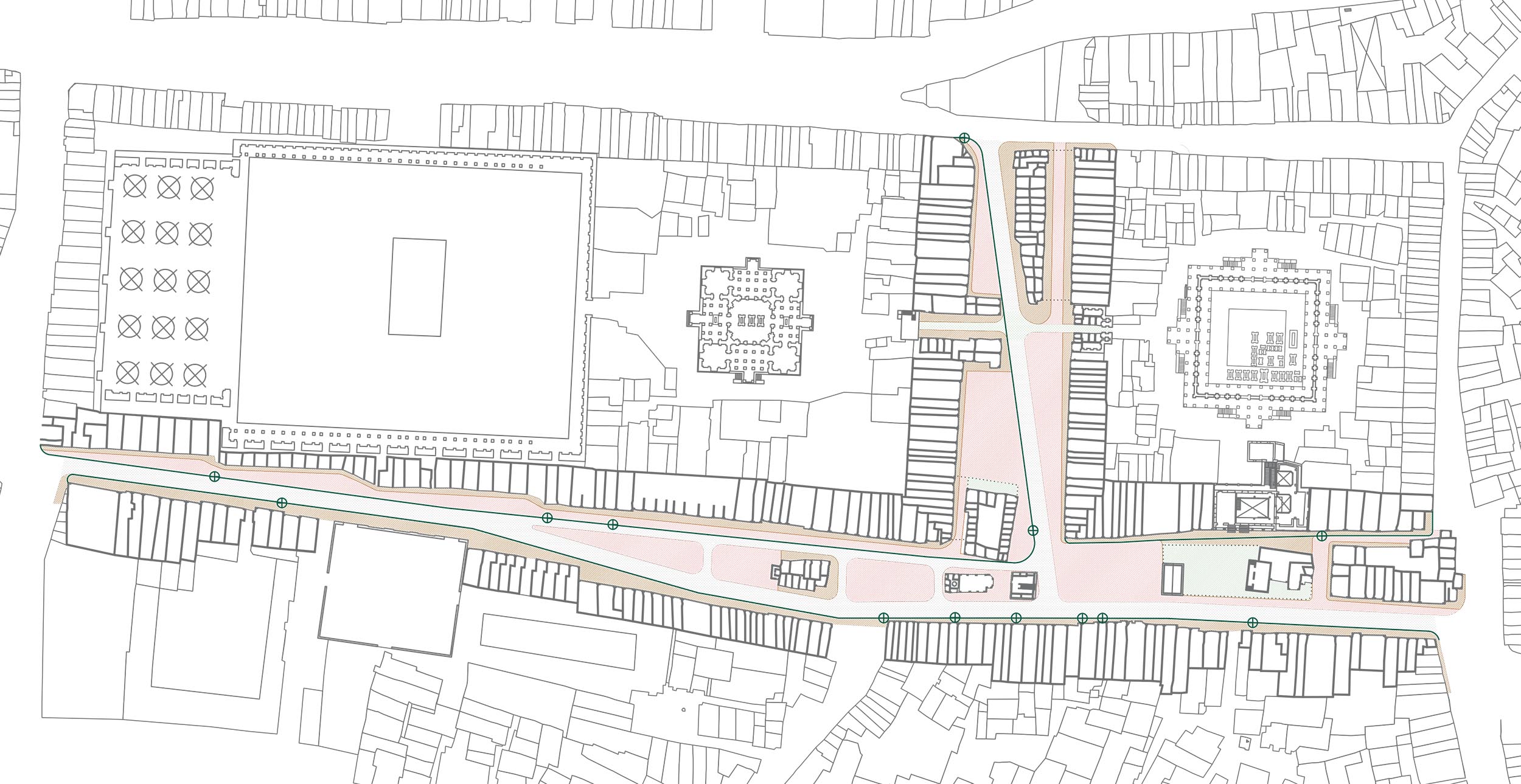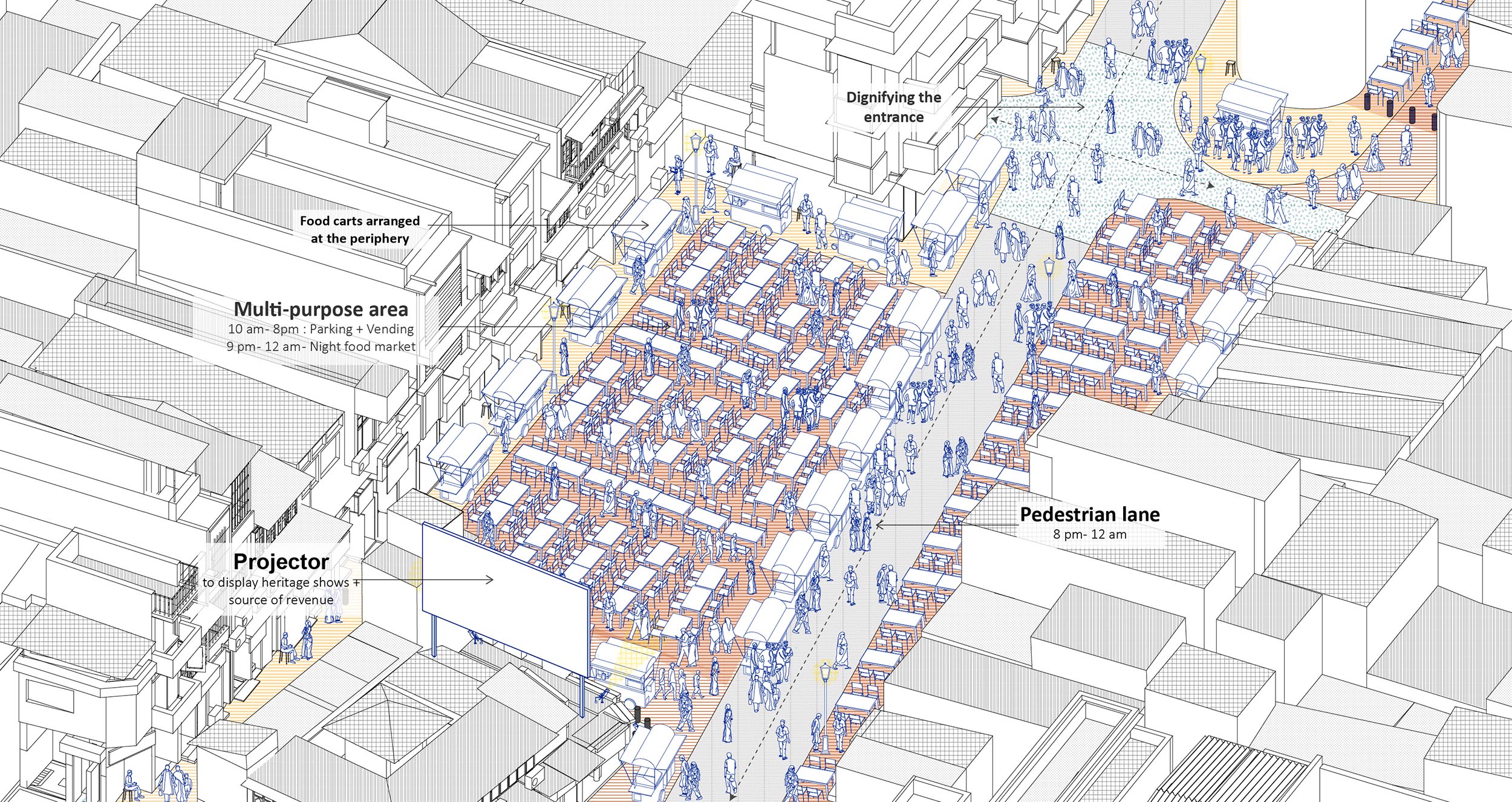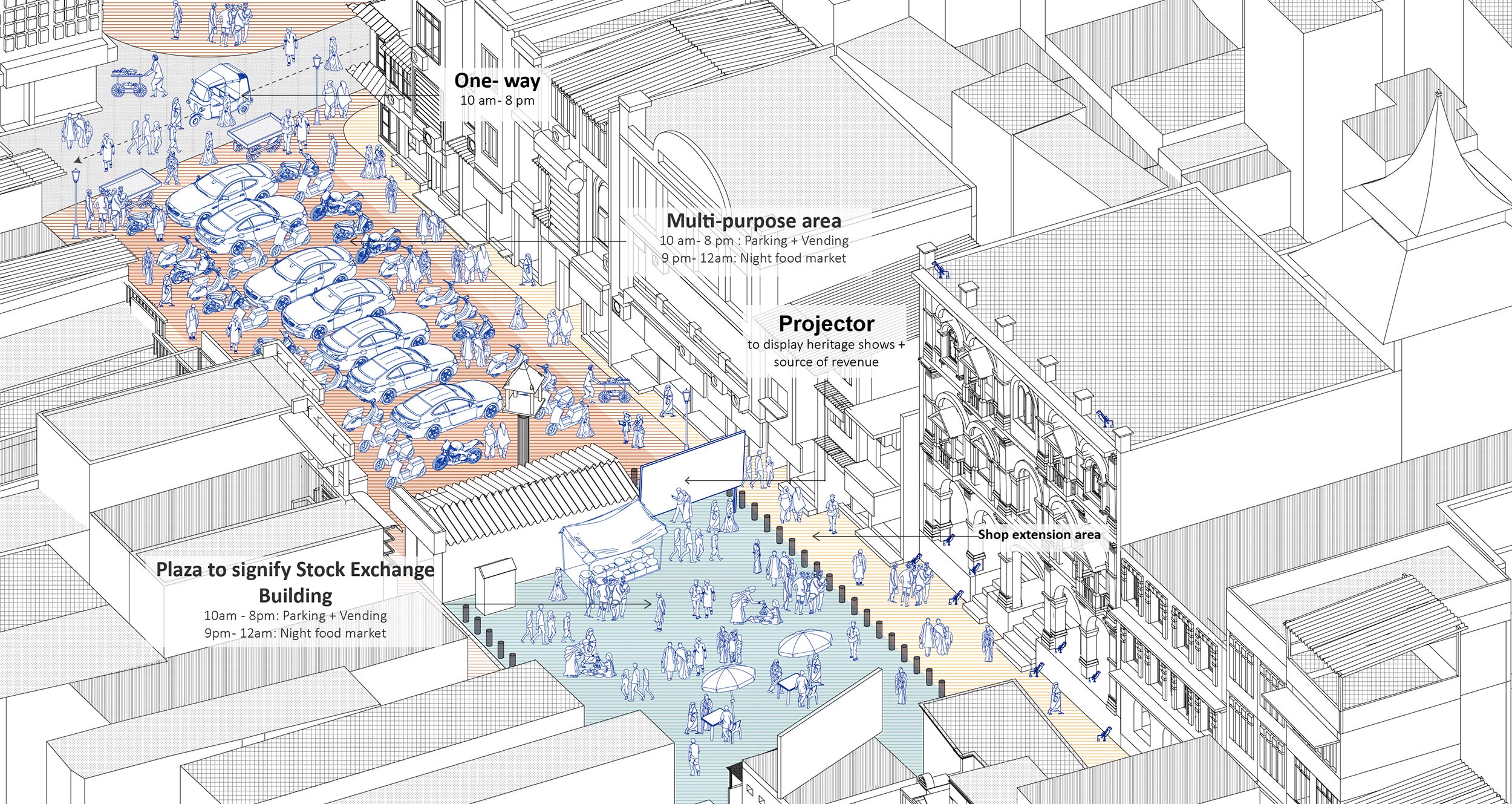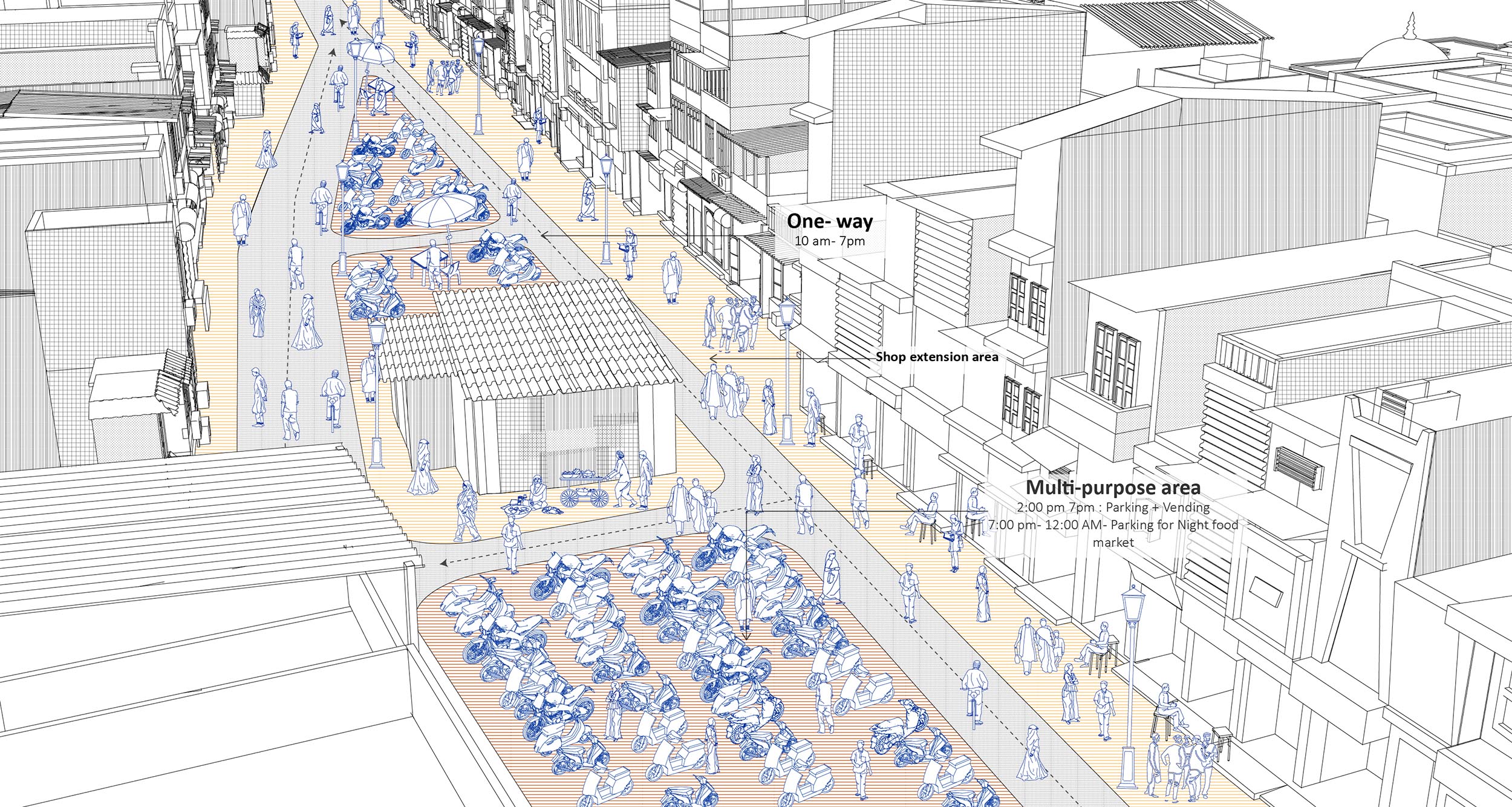Urban cities are ever-changing. These changes come about over a period of time due to numerous tangible (physicality of a place) and intangible (change in usage patterns, political impacts, and cultural shifts) factors. Consequently, people’s use of the same space also evolves accordingly. Ahmedabad – India’s first world heritage city – is no exception to this scenario. Manekchowk, a crucial public square in the city, has been around since the 16th century and has served as an essential meeting place for the city’s merchants, traders, and artisans. It is quite a detailed case study for an adaptive urban space whose usage changes daily from morning to evening. Transitioning from a fruit market in the morning to a jewelry market at noon and eventually into a food market at night, the place stands as an appropriate example of kinetic urban spaces. The square still functions as a gathering place for many. However, the rising population and the demanding needs of the people have resulted in cramped pathways, traffic congestion, and loss of social and heritage character on the site. Through interviews, observations, and analysis of the market’s history and development, the research aims to uncover how Manekchowk has changed over time and how its ephemeral character has been shaped by its physical, economic, and social environment. By understanding the market’s temporality, this study will propose a design solution and recommendations that would cater to the various layers of activities with respect to time that overlap in the precinct. It will explore solutions to facilitate the on-site transitionary movements and the activities that follow them throughout the day. The research will conclude with a way forward by advocating for a flexible design solution for a challenging urban environment like Manekchowk and many other locations that face the same problem in the present context.
Research and design on flexible Public urban space: Manekchowk precinct, 2023
-
Tags
Ahmedabad, Mapping, Manekchowk, Public space, Heritage precinct, Ahmedabad old city
Author: Kanisha Patel
Guide: Jignesh Mehta + Mansi Shah
The research aimed to find a flexible and adaptive design solution that can be used in Manekchowk’s complex urban environment without relocating the daily activities in the precinct. The study mainly focused on the public realm, including all the vehicular and pedestrian movement on the site, shops, and vending activities along with the infrastructure and service facilities. It provided a feasible design solution for this environment. It explored various design options to help balance functionality and heritage preservation demands. The study set forth specific objectives to accomplish this goal:
1. To understand and map the transitionary activities and spatial area on-site during different times of the day.
2. To understand the movement pattern and identify conflicting areas
3. To propose a design solution that will cater to the current demand of the site.
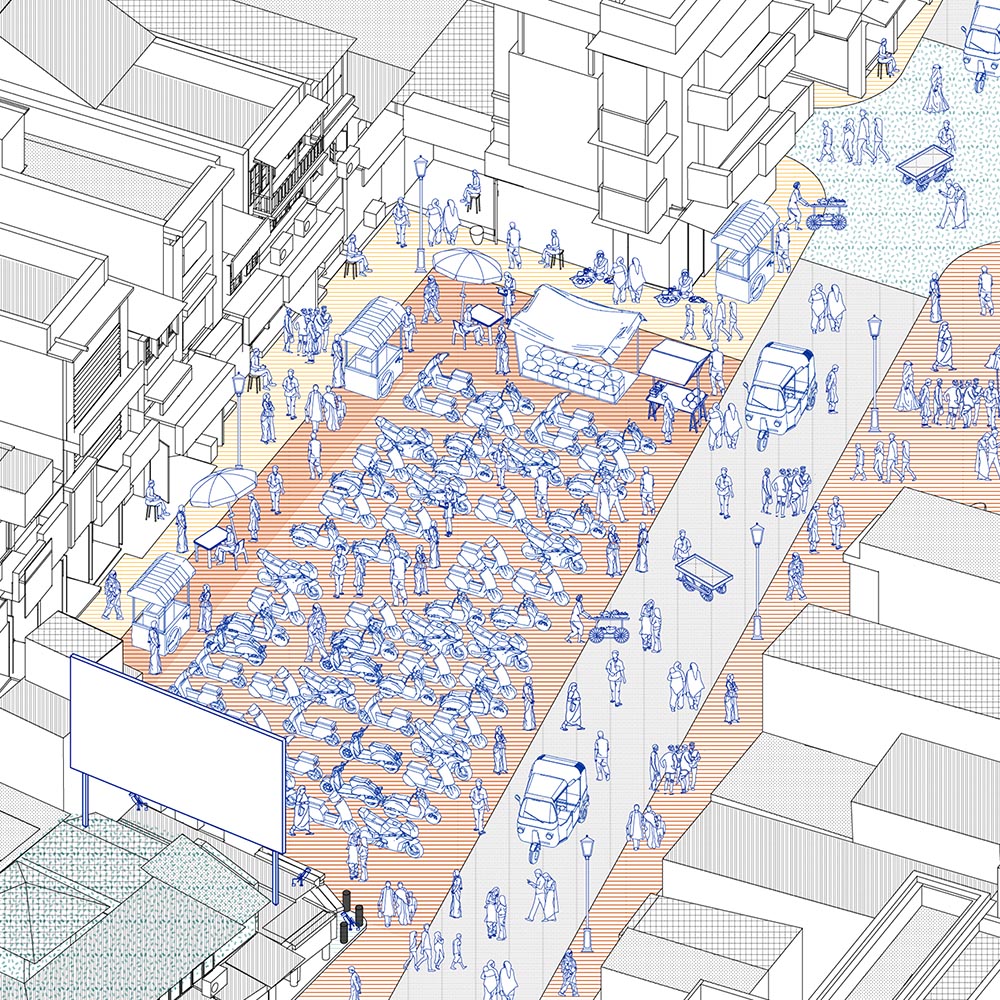
Activity mapping
Analysing area occupied
Movement and Conflicts
Proposal and Recommendations
The design proposal’s primary objectives would be:
1) To facilitate the existing activities rather than displace them,
2) to improve the overall image of the place,
In order to achieve this, the proposed solution aims at taking a minimalistic and non-disruptive design approach while also supporting the primary organizations on site. Since there is an overlap of vending and parking activities on site during different times of the day, the design aims to create a flexible space for various activities to take place in the same area throughout the day.
About Kanisha Patel
I am an inquisitive urbanist keenly interested in research-based practices such as sustainability, land use planning, transit, and mobility. This research has helped me widen my perspectives and explore minimalistic and non-interfering approaches to planning in complex urban environments with multiple layers of convolutions and stakeholders.



